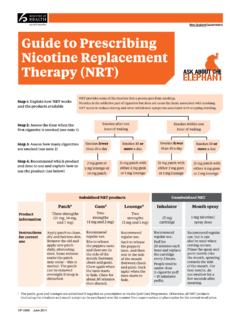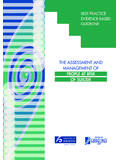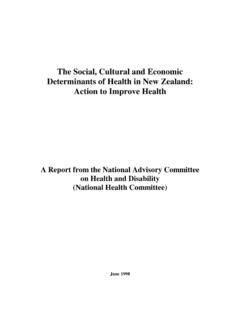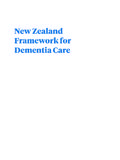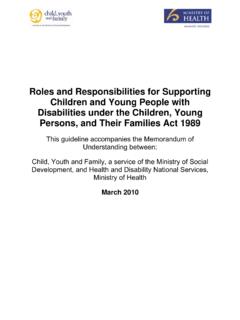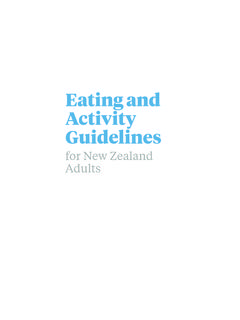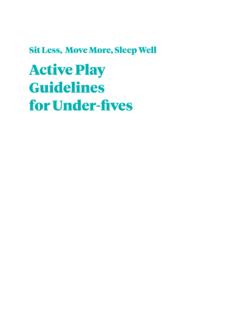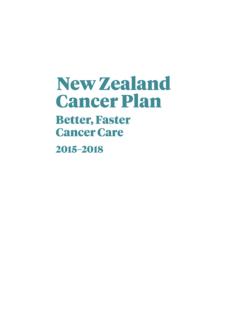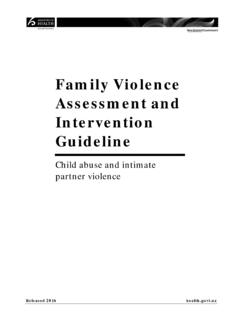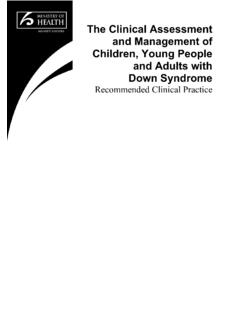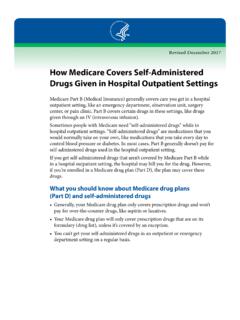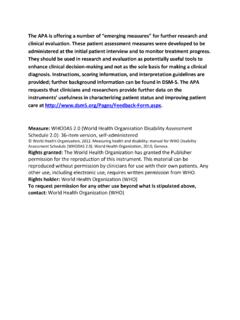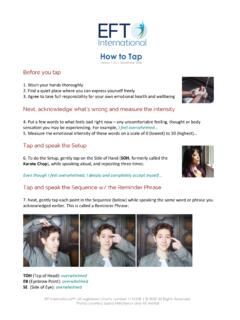Transcription of INTERIM INFECTION PREVENTION AND CONTROL GUIDANCE …
1 INTERIM INFECTION PREVENTION AND CONTROL GUIDANCE FOR THE SUPERVISION OF. RAPID ANTIGEN SCREENING TESTS FOR COVID-19. 15 February 2022. This document provides GUIDANCE for INFECTION PREVENTION and CONTROL (IPC) for the supervision of rapid antigen COVID-19 screening tests (RATs) by approved providers in New Zealand. These guidelines recognise that individual providers will need to tailor their response to local patterns of disease and available resources. This document provides high level GUIDANCE only. The IPC guidelines on pages 3 and 4 should be read in conjunction with the following GUIDANCE /information: Rapid antigen testing Ministry of Health COVID-19: INFECTION PREVENTION and CONTROL recommendations for health and disability care workers.
2 Ministry of Health GUIDANCE for the Provision of Rapid Antigen Screening by all providers Purpose This document has been developed to provide GUIDANCE to suitably trained providers who will be supervising individuals who need to undertake a rapid antigen test for COVID-19 in order to: Provide proof of a negative test for a domestic transport carrier that requires such evidence as part of its terms of carriage (pharmacies only). Enable people to attend a court hearing at the request of the Ministry of Justice (pharmacies only). Support Community Providers undertaking testing of priority populations Supervised testing can be accessed via the assisted channel by calling 0800 222 478 if a person requires assistance with undertaking a test.
3 This GUIDANCE may be superseded by any further GUIDANCE issued by the Ministry of Health to reflect changes in outbreak status or COVID-19 Protection Framework (CPF) levels. There may also be revisions to this GUIDANCE as eligibility for RATs changes. This GUIDANCE should be read in conjunction with the COVID-19 Testing Strategy for Aotearoa/New Zealand and the Testing GUIDANCE for the Health Sector. Background New Zealand has diagnostic testing measures in place to promptly identify cases of COVID-19 INFECTION and prevent transmission of COVID-19 in New Zealand.
4 Under Phases 1 and 2 of the Omicron Response Plan, conventional laboratory molecular (PCR) testing will remain the diagnostic test while rapid antigen tests continue to be used for surveillance and screening purposes only. Under Phase 3, rapid antigen tests will become a supplementary diagnostic tool. The use of rapid antigen testing will be expanded as the omicron variant becomes more widespread in the community. Should a person in New Zealand be confirmed to have COVID-19 INFECTION , the Ministry of Health and regional Public Health Units have procedures in place to identify people they have been in close contact with.
5 Those people are provided with advice about self -isolation to minimise spread of the virus. 1. The best way to avoid getting infected with COVID-19 is to get vaccinated and to adhere to INFECTION PREVENTION advice such as wearing a mask, maintaining a physical distance of at least 1m, facilities and spaces are well-ventilated, and performing hand hygiene. In Phase 2, the use of rapid antigen testing in community settings will become a common tool to support the diagnosis of COVID-19 INFECTION and reduce the risk of exposure to others. Other health measures include; not going to work or school if unwell, isolating if instructed to by the local medical officer of health and, where appropriate, a verbal screening of people asking if they have attended a venue of concern.
6 When rapid antigen testing is not appropriate Under Phase I of the Omicron Response Plan, if a person has flu-like symptoms or symptoms associated with COVID-19, or is a close or casual contact for COVID-19, rapid antigen screening should not be used, and the person should be directed immediately for a PCR test for COVID-19. The location of PCR testing sites across New Zealand can be found here: Where to get tested Unite Against COVID-19. COVID-19 Testing Healthpoint Appropriate signage regarding COVID-19 symptoms to the entrance of a provider to be displayed to advise people not to enter if they have symptoms of COVID-19.
7 Expanded use of rapid antigen testing Under Phase 2 of the Response Plan, rapid antigen tests may be used in addition to PCR testing for priority populations, symptomatic people and close contacts. Under Phase 3, symptomatic people or priority populations (particularly vulnerable groups) may use a rapid antigen test for diagnosis, and tests will be available at GPs, pharmacies, community providers, community testing centres or workplaces for symptomatic or critical workers. Service model Only rapid antigen test devices approved by the Ministry of Health can be used for COVID-19 testing in New Zealand.
8 Use of rapid antigen tests All provider staff members supervising people should be trained in the correct use of the device and the interpretation of the test results. Each product, however, has different requirements and so it highly recommended that the manufacturers' instructions are read in detail and closely adhered to. Links to training materials for each approved product can be found here. Results Staff are to follow national advice on communicating results to person. 2. INFECTION PREVENTION and CONTROL measures Environmental considerations for the provision of safe rapid antigen screening Provision of safe rapid antigen screening recommends that: the testing environment is fit for purpose.
9 The size of room and ventilation is adequate ( opening window or mechanical ventilation). Rooms used should comfortably fit two people and should be of a size that you can maintain 1 metre physical distance at all time whilst you supervise person self -testing. Room should be clutter free of other items. Have either a dedicated table or bench space for placing equipment needed for person to perform the test and all items ready for use. Refer to: COVID-19: Ventilation Ministry of Health Personal protective equipment Items of personal protective equipment (PPE) should be put on before entering dedicated RAT's area where person will be performing RATs.
10 Medical mask Single use gloves Hand hygiene must be done before donning PPE. Gloves are single use and should be discarded after use wash/sanitise hands after removing. Note: Medical masks can be worn for a session or shift for up to four hours. If mask becomes damp or soiled, medical masks must be changed more frequently. Used items should be removed and appropriately discarded in separate area away from person/general public. Order for putting on (donning) and removing (doffing) PPE: Donning Perform hand hygiene Medical mask ensure good fit to face Gloves Doffing Place items in bin after removal Remove gloves Perform hand hygiene 3.
